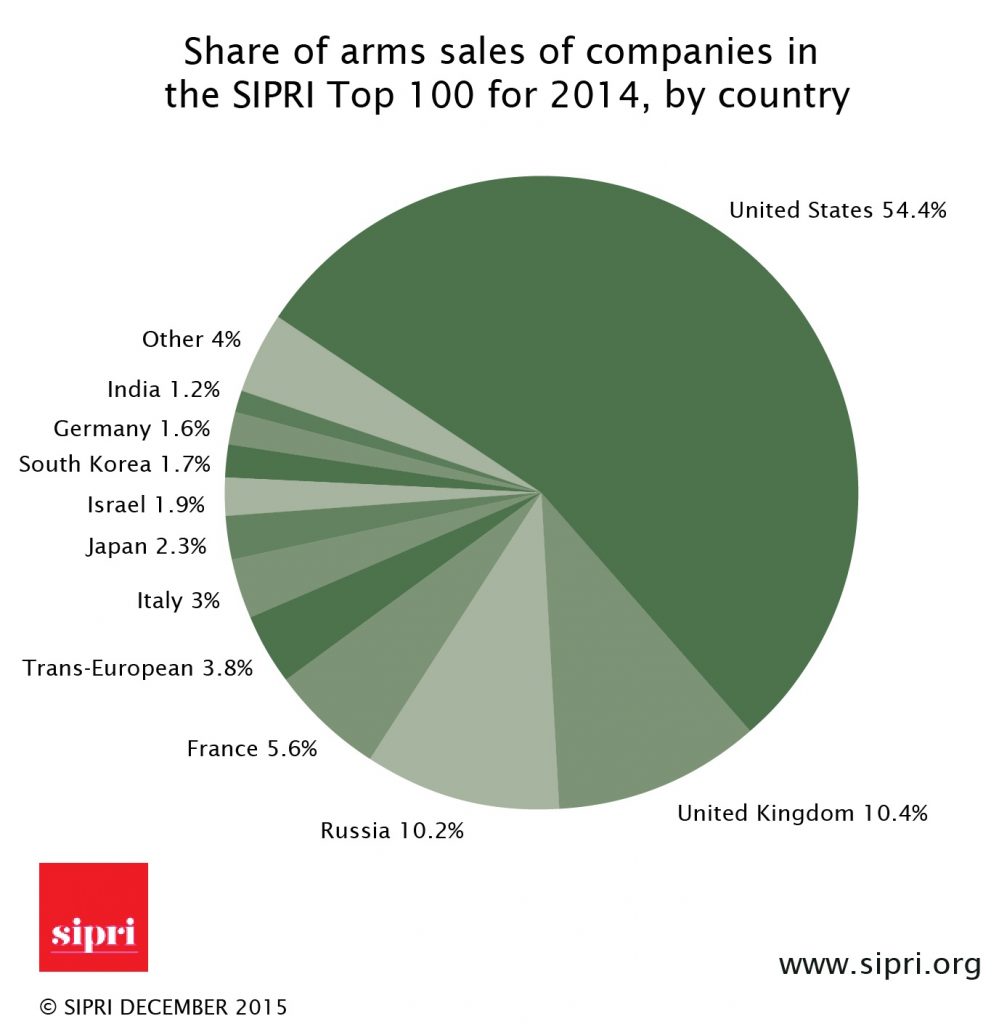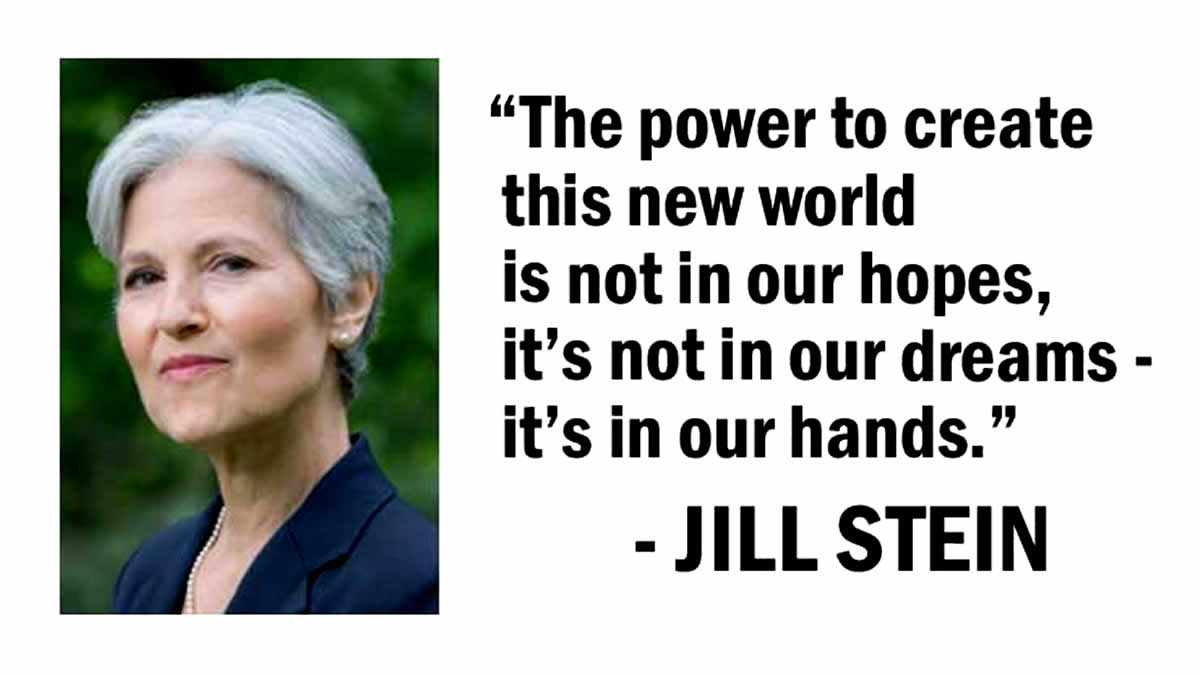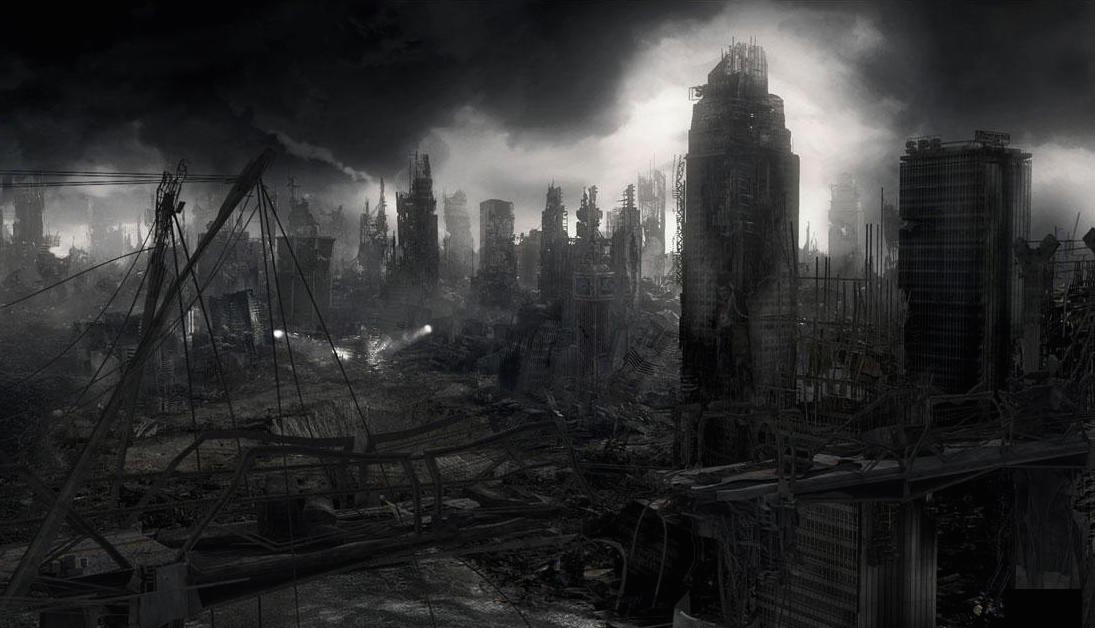 Let’s say that you spend $20 on two fifths of whiskey, get so drunk that you have a horrible automobile accident, hitting a school bus, killing over fifty elementary students, causing serious injury to several others. Three of the children who survived are now quadriplegics, two others have permanent brain damage, a number are disfigured because the bus caught on fire, and they couldn’t get out in time. Moreover, enraged by your clearly irresponsible behavior, several of the parents, solid members of the NRA — thus well-equipped with assault weapons and handguns — have vowed to avenge the death and crippling of their children. You find yourself being hunted down and must be on the alert at all times for a potentially lethal attack.
Let’s say that you spend $20 on two fifths of whiskey, get so drunk that you have a horrible automobile accident, hitting a school bus, killing over fifty elementary students, causing serious injury to several others. Three of the children who survived are now quadriplegics, two others have permanent brain damage, a number are disfigured because the bus caught on fire, and they couldn’t get out in time. Moreover, enraged by your clearly irresponsible behavior, several of the parents, solid members of the NRA — thus well-equipped with assault weapons and handguns — have vowed to avenge the death and crippling of their children. You find yourself being hunted down and must be on the alert at all times for a potentially lethal attack.
Now let’s imagine that through the magic of quantum theory and Einsteinian relativity, we could take you back to before this entire incident. You have that same $20 in your hands. You’re given a choice. You have full knowledge of what will happen if you buy the whiskey but you have an option: You can walk up to a complete stranger and hand him the $20.
To make it interesting, let’s say the stranger is a bum. Let’s say that from all appearances the guy is not employable, lives hand-to-mouth on what he can panhandle. It is also easy to imagine he will spend the $20 on cigarettes and beer.
Knowing what will happen if you keep the $20 for yourself — the whiskey, plowing into a school bus, mangling a bunch of innocent kids, creating enemies who now want to kill you — would you hand the $20 to the bum?
Since all of the good people who visit my website are the most intelligent, rational, decent and sensible humans on the planet, I will assume to a person that all of you would opt to hand the $20 over to the bum. Not only would you be sparing yourself a monumental amount of grief, and a stain on your conscience from which you might never recover, I have no doubt that the warm bubbles of Good Samaritanism would fill you with giddy abandon, a tactile bonanza for your good sense and generosity. What a splendid feeling! Why, it would be better than a kick-ass dose of selective serotonin reuptake inhibitors!
So what if the guy is a bum. A lot of people never find their groove. That $20 will make him feel like he won the lottery. He can spend it on whatever he likes. It’s really none of your business, right? And it’s not like you haven’t made some bad choices at one time or another. What about that time-share you bought in the Bahamas that turned out to be a shed for garden tools? Let him buy some cigarettes, a Hustler magazine, and Wild Horse.
Alright. Now through the magic of Blog World — where anything can happen because the person writing the blog can make up whatever he wants and being somewhat disconnected from reality or just plain nuts is no barrier as long as he can afford the $27.95 a year for an internet domain — let’s say YOU are suddenly in charge of the entire federal budget.
Now you don’t have just $20 to spend or giveaway.
You have $1.16 trillion dollars! That’s the total discretionary federal budget for 2016.
Here’s the choice. Do you continue to spend the majority of the money on defense, buying unnecessary junk, building and maintaining military bases — the U.S. already has close to 1000 in 143 countries — starting wars, bombing nations into complying with our agenda, killing tens of thousands of innocent people, spreading even more terrorism across the planet? Do you inflict carnage and suffering on undeserving citizens in distant countries, blowing up not just school buses, but whole schools, hospitals, villages, whole cities?
Or do you give some aid and comfort to those who for one reason or another have fallen on hard times here in the U.S.?
Despite the putative recovery from the 2008 crash, despite America still being by far the wealthiest country in the world, despite having the largest economy in the world with a whopping GDP of $18.56 trillion, there are some 45 million Americans living below the poverty line.
There are over 500,000 homeless people in America!
Does that compute? Over a half million human beings, many of them children, without a place to live in the richest nation in the history of the world?
Just considering the enormous amount of waste the direct result of Department of Defense incompetence and skewed priorities, it seems obvious something could be done about this.
The $1.5 trillion which is being spent on the biggest boondoggle in military history, the F-35 fighter jet, could push every single one of the 45 million poor above the poverty line for at least the next five years.
The $1.0 trillion which is being allocated to upgrade our already excessive nuclear arsenal, which currently has over 7,000 nuclear bombs — enough to destroy the entire planet forty times over — could put every homeless person in a $1,000,000 mansion and give them $50,000 to live on every year for the next twenty years.
Is this so outrageous? The idea of “helicopter money” to the homeless? Helping those folks who struggle every day to make ends meet pull even with the rest of us?
Finland is right now testing out the idea of a guaranteed minimum income for citizens who are now unemployed, a no-strings-attached, tax-free stipend of $630 per month.
Yeah, some of those homeless and poor people might not be employable. And a few might buy beer and a Hustler magazine.
But the truth is most of them will feed their kids and replace the bald tires on their car.
I’m not suggesting we give million-dollar mansions to every homeless person.
The point of this article is to put things in perspective. We hear these figures bandied about all of the time. $3 trillion for the Afghanistan war. Another $4 trillion for the Iraq war. Figures so mind-boggling, it’s almost impossible to wrap our heads around them.
Can anyone out there say with a straight face we can’t find some money in the vast wealth of the U.S. of A. so that everyone can have at bare minimum a decent life? So that we can be proud of our country and the way it treats its citizens, especially its most vulnerable?
We can do whatever we decide to do. That’s what a democracy is, if we still have such a thing in America anymore. It’s a matter of getting over the brainwashing we have been subjected to all of our lives. It’s a matter of reconnecting with the values which allegedly are the foundations for our Christian nation. Granted, Jesus wasn’t a U.S. citizen but it seems a lot of people here claim to align with his teaching. Does this sound familiar?
“Come, you that are blessed by my Father, inherit the kingdom prepared for you from the foundation of the world; for I was hungry and you gave me food, I was thirsty and you gave me something to drink, I was a stranger and you welcomed me, I was naked and you gave me clothing, I was sick and you took care of me, I was in prison and you visited me.” – Matthew 25:34-36
So, returning to our “thought experiment” . . .
Does the comparison of America’s leadership to an inebriated driver plowing into a school bus full of children hold up?
Is there any doubt?
Our foreign policy has the U.S. military careening across the planet spreading death and destruction, chaos and fear, violence and terrorism. The whole bunch — Obama, Biden, Carter, Clinton, Power, Rice, Nuland, Kerry, Clapper — are drunk on power. Yes, they are drunk on their sense of entitlement and destiny. They are drunk on psychopathic fantasies of conquest and empire. They are drunk on delusions of becoming deities.
And a school bus of innocent maimed and dead school kids, however horrifying and tragic, is small potatoes compared to the tens of thousands murdered, mutilated, crippled, driven from their homes, subjected to the worst possible conditions, by U.S. military aggression over the past 15 years, with the fraudulent War on Terror, pursuit of regime change, and wholesale destruction of nations which posed no threat to the U.S. or its citizens.
Yes, these lunatics are DUI alright. They are driving America and the world to the brink of destruction, under the influence of greed and profit-seeking by the defense industries and a fanatic loyalty to the bogus pseudo-ideology of neoconservatism, a brain-eating, morally debilitating virus spread by sociopaths like Robert Kagan and Paul Wolfowitz.
So there’s the choice. Help some people who need help. Or continue to let the crazies get behind the wheel of the mightiest military machine in history so they can perpetuate the destructive rampage that makes the U.S. the greatest threat to peace in the world today.
I titled this piece Thought Experiment. But in reality, this is no cerebral exercise at all.
Because when you step into the voting booth on November 8th, you will have this choice or some version of it staring you in the face. Every decision you make is another iteration of this choice. Who you choose as your congressman, who you select as your senator, who you vote for to become president. Their priorities become your priorities.
No one who has read even a handful of my articles will have any doubt about where I stand on the election. I believe everyone who has regularly breathed the toxic brew of cronyism, self-serving lies, and monomaniacal propaganda, which currently permeates our nation’s capital, must go. We cannot make progress without complete and total regime change in Washington DC. A clean sweep! But I’m extreme that way. I keep thinking we can have a government which truly represents the people, looks out for their best interest, one which puts the enormous wealth and resources of the U.S. to proper use, promoting the general welfare of its citizens. Realistically, for starters that would require kicking our addiction to war and then becoming the world’s greatest purveyor of peace. Without that, we can never escape the moral and financial bankruptcy which will inevitably destroy our nation, if not the entire world.
Just remember. There’s a reason why America is one of the most feared, and increasingly hated, reviled, and targeted nations in the world. There’s a reason why the world is in the screwed-up state it’s in. And if you return the same people to office who caused this mess, then you become part of the reason too.
It doesn’t have to be this way. We don’t have to have perpetual war. We don’t have to live under the thumb of the rich and powerful. We don’t have to be the victims of grotesque wealth inequality. We don’t have to sit back and watch as our country is looted and our democracy becomes a standing joke. We don’t have to march to the constant beat of war drums and drink the Kool-Aid of ultra-nationalism and exceptionalism.
Which America will you choose?
November 8th. Voting is not a thought experiment. It’s the real deal.
By the way, as noted in the fine print on the image at the head of this article, that is an unretouched photo of contiguous rich and not-so-rich neighborhoods in Santa Fe, NM. Bernie Sanders made wealth inequality central to his recent presidential campaign. People responded to his message for good reason.
It’s not just embarrassing. It’s unacceptable. It’s immoral. It’s unconscionable.
It’s un-American!
Maybe we can’t all live in mansions. But the poor and homeless certainly deserve better.
Let’s spread the wealth around a bit, eh? We begin that with peace in the world and peace right here at home. Peace with one another. Peace with our own souls.
Does this make me a socialist? A hippie? A peace-and-love Pollyanna?
 I never use the phrase ‘conspiracy theory’ anymore. It carries too much of a pejorative connotation and strongly implies that what is being discussed should obviously be dismissed.
I never use the phrase ‘conspiracy theory’ anymore. It carries too much of a pejorative connotation and strongly implies that what is being discussed should obviously be dismissed. Death by heroin overdose quadrupled in eleven years and is now reaching alarming levels.
Death by heroin overdose quadrupled in eleven years and is now reaching alarming levels. Xi Jinping, the current president of the People’s Republic of China, as many other embittered Chinese scholars likewise do, refers to this era of addiction and enslavement as the Century of Humiliation. He has vowed to never allow China to be subjected to such disrespect again. It’s what drives his foreign policy and what our historically-ignorant politicos view as his “confrontational” policies and recalcitrance with the U.S. You see, Xi Jinping is acutely aware of America’s use of drug trade and drug addiction to control and enslave whole nations.
Xi Jinping, the current president of the People’s Republic of China, as many other embittered Chinese scholars likewise do, refers to this era of addiction and enslavement as the Century of Humiliation. He has vowed to never allow China to be subjected to such disrespect again. It’s what drives his foreign policy and what our historically-ignorant politicos view as his “confrontational” policies and recalcitrance with the U.S. You see, Xi Jinping is acutely aware of America’s use of drug trade and drug addiction to control and enslave whole nations.

















Thought Experiment
Now let’s imagine that through the magic of quantum theory and Einsteinian relativity, we could take you back to before this entire incident. You have that same $20 in your hands. You’re given a choice. You have full knowledge of what will happen if you buy the whiskey but you have an option: You can walk up to a complete stranger and hand him the $20.
To make it interesting, let’s say the stranger is a bum. Let’s say that from all appearances the guy is not employable, lives hand-to-mouth on what he can panhandle. It is also easy to imagine he will spend the $20 on cigarettes and beer.
Knowing what will happen if you keep the $20 for yourself — the whiskey, plowing into a school bus, mangling a bunch of innocent kids, creating enemies who now want to kill you — would you hand the $20 to the bum?
Since all of the good people who visit my website are the most intelligent, rational, decent and sensible humans on the planet, I will assume to a person that all of you would opt to hand the $20 over to the bum. Not only would you be sparing yourself a monumental amount of grief, and a stain on your conscience from which you might never recover, I have no doubt that the warm bubbles of Good Samaritanism would fill you with giddy abandon, a tactile bonanza for your good sense and generosity. What a splendid feeling! Why, it would be better than a kick-ass dose of selective serotonin reuptake inhibitors!
So what if the guy is a bum. A lot of people never find their groove. That $20 will make him feel like he won the lottery. He can spend it on whatever he likes. It’s really none of your business, right? And it’s not like you haven’t made some bad choices at one time or another. What about that time-share you bought in the Bahamas that turned out to be a shed for garden tools? Let him buy some cigarettes, a Hustler magazine, and Wild Horse.
Alright. Now through the magic of Blog World — where anything can happen because the person writing the blog can make up whatever he wants and being somewhat disconnected from reality or just plain nuts is no barrier as long as he can afford the $27.95 a year for an internet domain — let’s say YOU are suddenly in charge of the entire federal budget.
Now you don’t have just $20 to spend or giveaway.
You have $1.16 trillion dollars! That’s the total discretionary federal budget for 2016.
Here’s the choice. Do you continue to spend the majority of the money on defense, buying unnecessary junk, building and maintaining military bases — the U.S. already has close to 1000 in 143 countries — starting wars, bombing nations into complying with our agenda, killing tens of thousands of innocent people, spreading even more terrorism across the planet? Do you inflict carnage and suffering on undeserving citizens in distant countries, blowing up not just school buses, but whole schools, hospitals, villages, whole cities?
Or do you give some aid and comfort to those who for one reason or another have fallen on hard times here in the U.S.?
Despite the putative recovery from the 2008 crash, despite America still being by far the wealthiest country in the world, despite having the largest economy in the world with a whopping GDP of $18.56 trillion, there are some 45 million Americans living below the poverty line.
There are over 500,000 homeless people in America!
Does that compute? Over a half million human beings, many of them children, without a place to live in the richest nation in the history of the world?
Just considering the enormous amount of waste the direct result of Department of Defense incompetence and skewed priorities, it seems obvious something could be done about this.
The $1.5 trillion which is being spent on the biggest boondoggle in military history, the F-35 fighter jet, could push every single one of the 45 million poor above the poverty line for at least the next five years.
The $1.0 trillion which is being allocated to upgrade our already excessive nuclear arsenal, which currently has over 7,000 nuclear bombs — enough to destroy the entire planet forty times over — could put every homeless person in a $1,000,000 mansion and give them $50,000 to live on every year for the next twenty years.
Is this so outrageous? The idea of “helicopter money” to the homeless? Helping those folks who struggle every day to make ends meet pull even with the rest of us?
Finland is right now testing out the idea of a guaranteed minimum income for citizens who are now unemployed, a no-strings-attached, tax-free stipend of $630 per month.
Yeah, some of those homeless and poor people might not be employable. And a few might buy beer and a Hustler magazine.
But the truth is most of them will feed their kids and replace the bald tires on their car.
I’m not suggesting we give million-dollar mansions to every homeless person.
The point of this article is to put things in perspective. We hear these figures bandied about all of the time. $3 trillion for the Afghanistan war. Another $4 trillion for the Iraq war. Figures so mind-boggling, it’s almost impossible to wrap our heads around them.
Can anyone out there say with a straight face we can’t find some money in the vast wealth of the U.S. of A. so that everyone can have at bare minimum a decent life? So that we can be proud of our country and the way it treats its citizens, especially its most vulnerable?
We can do whatever we decide to do. That’s what a democracy is, if we still have such a thing in America anymore. It’s a matter of getting over the brainwashing we have been subjected to all of our lives. It’s a matter of reconnecting with the values which allegedly are the foundations for our Christian nation. Granted, Jesus wasn’t a U.S. citizen but it seems a lot of people here claim to align with his teaching. Does this sound familiar?
“Come, you that are blessed by my Father, inherit the kingdom prepared for you from the foundation of the world; for I was hungry and you gave me food, I was thirsty and you gave me something to drink, I was a stranger and you welcomed me, I was naked and you gave me clothing, I was sick and you took care of me, I was in prison and you visited me.” – Matthew 25:34-36
So, returning to our “thought experiment” . . .
Does the comparison of America’s leadership to an inebriated driver plowing into a school bus full of children hold up?
Is there any doubt?
Our foreign policy has the U.S. military careening across the planet spreading death and destruction, chaos and fear, violence and terrorism. The whole bunch — Obama, Biden, Carter, Clinton, Power, Rice, Nuland, Kerry, Clapper — are drunk on power. Yes, they are drunk on their sense of entitlement and destiny. They are drunk on psychopathic fantasies of conquest and empire. They are drunk on delusions of becoming deities.
And a school bus of innocent maimed and dead school kids, however horrifying and tragic, is small potatoes compared to the tens of thousands murdered, mutilated, crippled, driven from their homes, subjected to the worst possible conditions, by U.S. military aggression over the past 15 years, with the fraudulent War on Terror, pursuit of regime change, and wholesale destruction of nations which posed no threat to the U.S. or its citizens.
Yes, these lunatics are DUI alright. They are driving America and the world to the brink of destruction, under the influence of greed and profit-seeking by the defense industries and a fanatic loyalty to the bogus pseudo-ideology of neoconservatism, a brain-eating, morally debilitating virus spread by sociopaths like Robert Kagan and Paul Wolfowitz.
So there’s the choice. Help some people who need help. Or continue to let the crazies get behind the wheel of the mightiest military machine in history so they can perpetuate the destructive rampage that makes the U.S. the greatest threat to peace in the world today.
I titled this piece Thought Experiment. But in reality, this is no cerebral exercise at all.
Because when you step into the voting booth on November 8th, you will have this choice or some version of it staring you in the face. Every decision you make is another iteration of this choice. Who you choose as your congressman, who you select as your senator, who you vote for to become president. Their priorities become your priorities.
No one who has read even a handful of my articles will have any doubt about where I stand on the election. I believe everyone who has regularly breathed the toxic brew of cronyism, self-serving lies, and monomaniacal propaganda, which currently permeates our nation’s capital, must go. We cannot make progress without complete and total regime change in Washington DC. A clean sweep! But I’m extreme that way. I keep thinking we can have a government which truly represents the people, looks out for their best interest, one which puts the enormous wealth and resources of the U.S. to proper use, promoting the general welfare of its citizens. Realistically, for starters that would require kicking our addiction to war and then becoming the world’s greatest purveyor of peace. Without that, we can never escape the moral and financial bankruptcy which will inevitably destroy our nation, if not the entire world.
Just remember. There’s a reason why America is one of the most feared, and increasingly hated, reviled, and targeted nations in the world. There’s a reason why the world is in the screwed-up state it’s in. And if you return the same people to office who caused this mess, then you become part of the reason too.
It doesn’t have to be this way. We don’t have to have perpetual war. We don’t have to live under the thumb of the rich and powerful. We don’t have to be the victims of grotesque wealth inequality. We don’t have to sit back and watch as our country is looted and our democracy becomes a standing joke. We don’t have to march to the constant beat of war drums and drink the Kool-Aid of ultra-nationalism and exceptionalism.
Which America will you choose?
November 8th. Voting is not a thought experiment. It’s the real deal.
By the way, as noted in the fine print on the image at the head of this article, that is an unretouched photo of contiguous rich and not-so-rich neighborhoods in Santa Fe, NM. Bernie Sanders made wealth inequality central to his recent presidential campaign. People responded to his message for good reason.
It’s not just embarrassing. It’s unacceptable. It’s immoral. It’s unconscionable.
It’s un-American!
Maybe we can’t all live in mansions. But the poor and homeless certainly deserve better.
Let’s spread the wealth around a bit, eh? We begin that with peace in the world and peace right here at home. Peace with one another. Peace with our own souls.
Does this make me a socialist? A hippie? A peace-and-love Pollyanna?